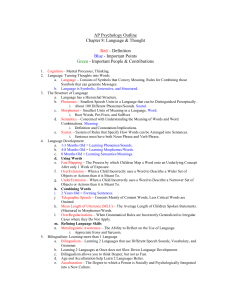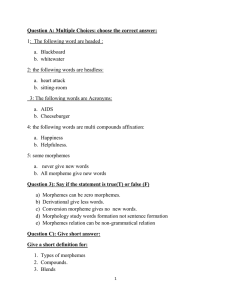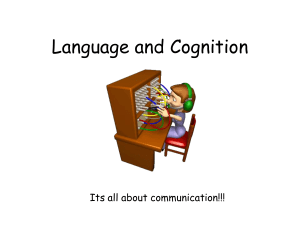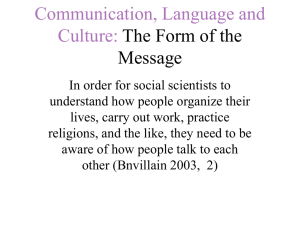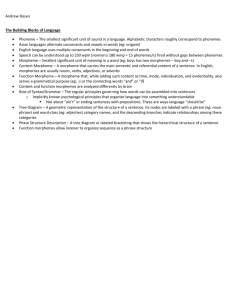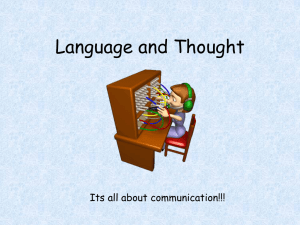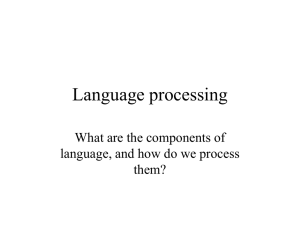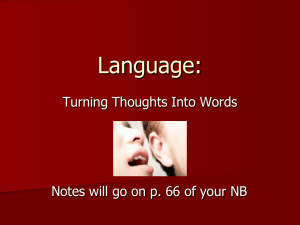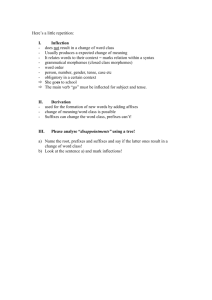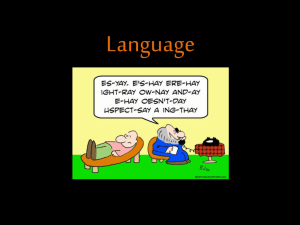Abnormal Psychology - University of Toronto Mississauga
advertisement
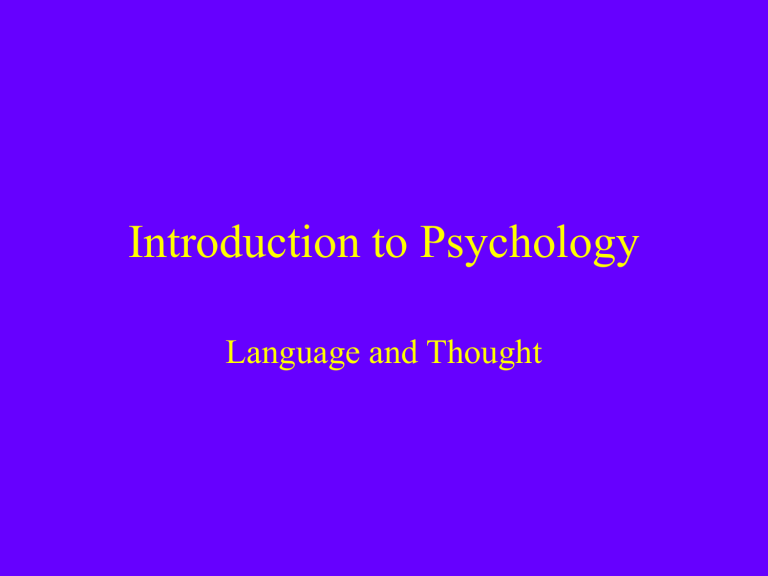
Introduction to Psychology Language and Thought Language • A language is a system of symbols, sounds, meanings, and rules of combination that allows for communication among humans • Phonemes: the smallest units of sound • Morphemes: the smallest units of meaning • Phrases are composed of morphemes • Sentences: strings of morphemes and phrases that express a thought or intention Nonverbal Communication • • • • • • • Nonverbal communication includes: vocal intonation body language (crossed arms) gestures (often involving the hands or fingers) physical distance facial expressions touch Language Development • • • • • • • • 100 basic phonemes Babbling (6 - 18 months) Words (10 - 13 months) Vocabulary spurt (18 – 24 months) Receptive vs. productive vocabulary Fast Mapping Over and Under-extensions Overregularizations Language Development • The case for nurture: (behaviorist) • B.F. Skinner argued that children imitate the utterances of their parents • Skinner suggests that children receive differential reinforcement for speech sounds • The case for nature (Nativist) • Chomksy argued that language acquisition appears to be universal across culture (could not be accounted for by learning) • Interactionist Critical Periods for Language Acquisition • Critical periods assume that an organism must develop a function within a limited time frame or it will not develop at all • Children easily learn second languages, adults have great difficulty • Isolated children have language impairments: • Genie: was isolated as a child and was unable to learn complex language as an adolescent Problem Solving • Problem solving refers to the process by which we transform one situation into another to meet a goal • Problems vary by definition: – Well-defined versus ill-defined • Strategies of problem solving: – Algorithms are systematic procedures that will produce a solution to a problem – Hypothesis testing: make an educated guess about a problem; then test it – Mental simulation: mental rehearsal of the steps needed to solve a problem © 2002 John Wiley & Sons, Inc. Problem Solving: Barriers • • • • Irrelevant information Functional fixedness Mental set Unnecessary constraints Approaches to Problem Solving • • • • • • Algorithms Heuristics Forming sub-goals Working backward Searching for Analogies Changing the representation of the problem Finding Order in Random Events: The Hot Hand • Basketball players estimate they are 25% more likely to hit a basket after they have sunk one the shot before • The opposite is true: players were 6% more likely to sink a basket after a miss than a hit • Streaks are simply random sequences expected by the laws of probability • Gambler’s Fallacy • Illusory Correlations The Base Rate Fallacy • Fear of flying vs. driving • Anthrax vs. influenza • SARS vs. viral encephalitis The Impact of Vivid Events • 1) 2) 3) 4) 5) 6) 7) Which of the following are more frequent causes of death in Canada? Homicide or Diabetes Flood or Pneumonia All accidents or Stroke All cancers or heart disease Tornados or Alzheimer’s disease Drowning or Leukemia Motor vehicle accidents or cancer of the digestive system Regression Toward the Average • Rookie of the year rarely has a better second season • Sports Illustrated Jinx


